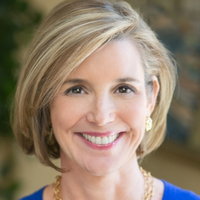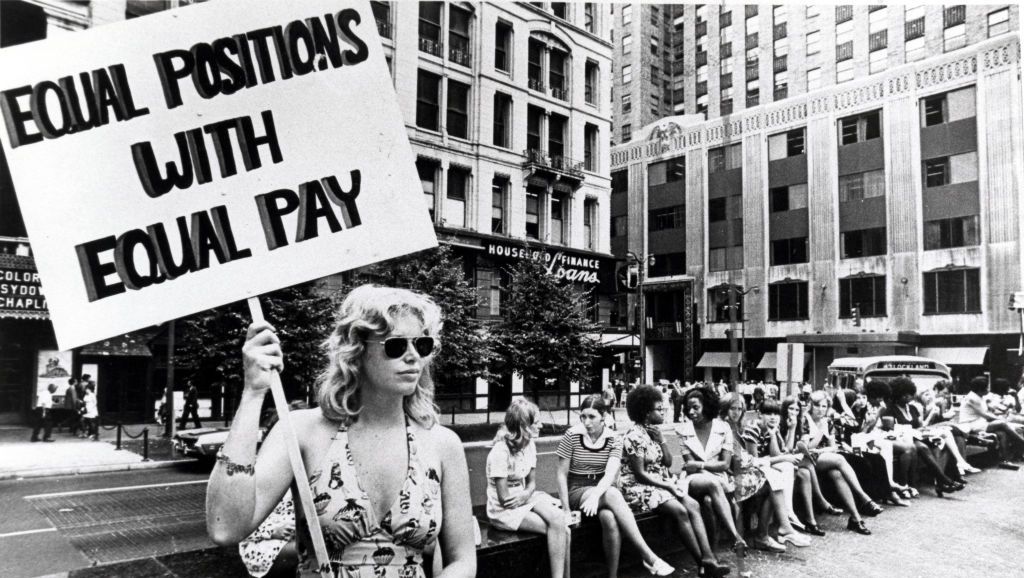The Best Low-Risk Investments, According to Sallie Krawcheck
There's no such thing as a completely risk-free investment, but these five money-makers are pretty darn close.


When women ask me for one piece of financial advice that matters most, I tell them this: The best time to start investing is yesterday. Since that's not possible (yet), today is ideal.
But the reality is that not everyone is comfortable with the risk of investing. A number of you have even asked me about how one might unearth no-risk investments. Or, even better, investments that could provide a really high return without heartache (i.e. you want to find stocks like Apple or Google before they were Apple or Google).

Sallie Krawcheck, CEO and founder of Ellevest
I’m sorry to tell you that investing doesn’t work that way. When we invest, there is no such thing as returns without at least some risk. And there is no sure thing, no matter what that guy at work tells you is a “hot stock pick.” (If you’re in a Zoom meeting, feel free to turn off your camera and roll your eyes as many times as you’d like.)
That’s because markets tend to be “efficient”—there are lots of professional traders, portfolio managers, and analysts who spend their whole careers researching and investing, so the chance that the guy down the hall will consistently know more than they do, or see something that they don’t, is pretty close to nil.
But here’s the good news: There are some less sexy, low-risk ways you can earn returns.
1. Pay off credit card debt
Credit card companies usually charge you a double-digit percent interest rate on your balance (right now it’s hovering around 16 percent, on average). That’s money you pay to the credit card companies in exchange for borrowing from them. Make a plan to pay that off, and you’ll save that double-digit percent on the money you borrowed.
Get exclusive access to fashion and beauty trends, hot-off-the-press celebrity news, and more.
2. Take advantage of your employer’s 401(k) match
If your employer offers a 401(k) match, do whatever you can to take full advantage of it. Every employer’s benefits are different, so you’ll have to check for the details on exactly how yours works, but usually it’s set up so that, if you contribute part of your paycheck into your 401(k), your employer will put some in, too. There might be conditions around when that money is yours to keep, but it’s literally free money. And with the most common match being 50 cents on the dollar until you hit the max—well, that’s like a 50 percent return on your contribution.
3. Think about a savings account
If you’re truly looking for minimum risk, and you’re willing to accept minimum returns, there’s always a good, old-fashioned savings account, which is FDIC-insured (low risk) and pays a small amount in interest. Today, the average savings account interest rate is 0.06 percent. (Again: Want lower risk? Expect. lower. returns.)
At Ellevest, we typically recommend using a savings account only for your emergency fund (don’t want to risk that!) and any money you expect to need in the next one to two years.
4. Look into government bonds
When you buy bonds from the government, you’re essentially lending money to the U.S. government. They’re considered low risk because almost everyone expects the U.S. government to stay around for a long time, and to pay back its loans. (After all, the government always has the power to print more money.) Three-month bonds are currently paying 0.06 percent. If you invest in long-term U.S. government bonds, you can earn a somewhat higher return, say 1.89 percent for 30 years.
5. Have a diversified portfolio—it's your best bet to building wealth
I know, I know, it may not be the advice you came here for, but hear me out. If what you really want is a way to mute (not eliminate, but mute) the stomach-lurching market declines that can come with investing, that’s where diversification comes in.
Diversification basically means not putting all your financial eggs in one basket. It means building an investment portfolio that’s made up of many different types of investments that behave in different ways, and it’s the tried and true method of investing we use at Ellevest.
How to get started: You’ll want to start by diversifying your mix of asset classes (a fancy way to refer to the type of investments, like stocks, bonds, and “alternatives,” like real estate, for example) in your investment portfolio. The less risky types can help lessen the blow from certain curveballs that might come your way with more risky types: market downturns and, in certain cases, rising inflation. Then within those asset classes, you can diversify even further. For example, within the asset class of stocks, you can own stocks in large companies, small companies, tech companies, retail companies, U.S. companies, foreign companies ... you get the picture.
Of course, diversification has the opposite effect too: If one of your investments did turn out to be an Apple or a Google, your portfolio wouldn’t grow as much as it would have if all your money had been in that single investment. But that would be a super risky approach. Nobody can predict what will happen to an investment in the future. Virtually nobody guesses right, either.
TL, DR: Historically speaking, if you want to make your big goals a reality, the best way to build your wealth (and thus your power) is to invest consistently, a bit out of every paycheck.
Ellevest is giving Marie Claire readers $20 to start investing today. Go forth and invest!
Sallie Krawcheck is the CEO and co-founder of Ellevest, a financial company built by women, for women. She is the former CFO of Citi, and the former CEO of Merrill Lynch and of Smith Barney.
RELATED STORIES


